China's transition from an agrarian economy to a global superpower in half a century has been a success. It is hard to believe that China, one of the world's most powerful nations, was once a poor country. To put it in perspective, more than 88% of the population lived on less than $ 2 a day in the 1970s. In addition, China had a GDP of only $ 92.6 billion in 1970, compared to $ 1.073 trillion in the United States.
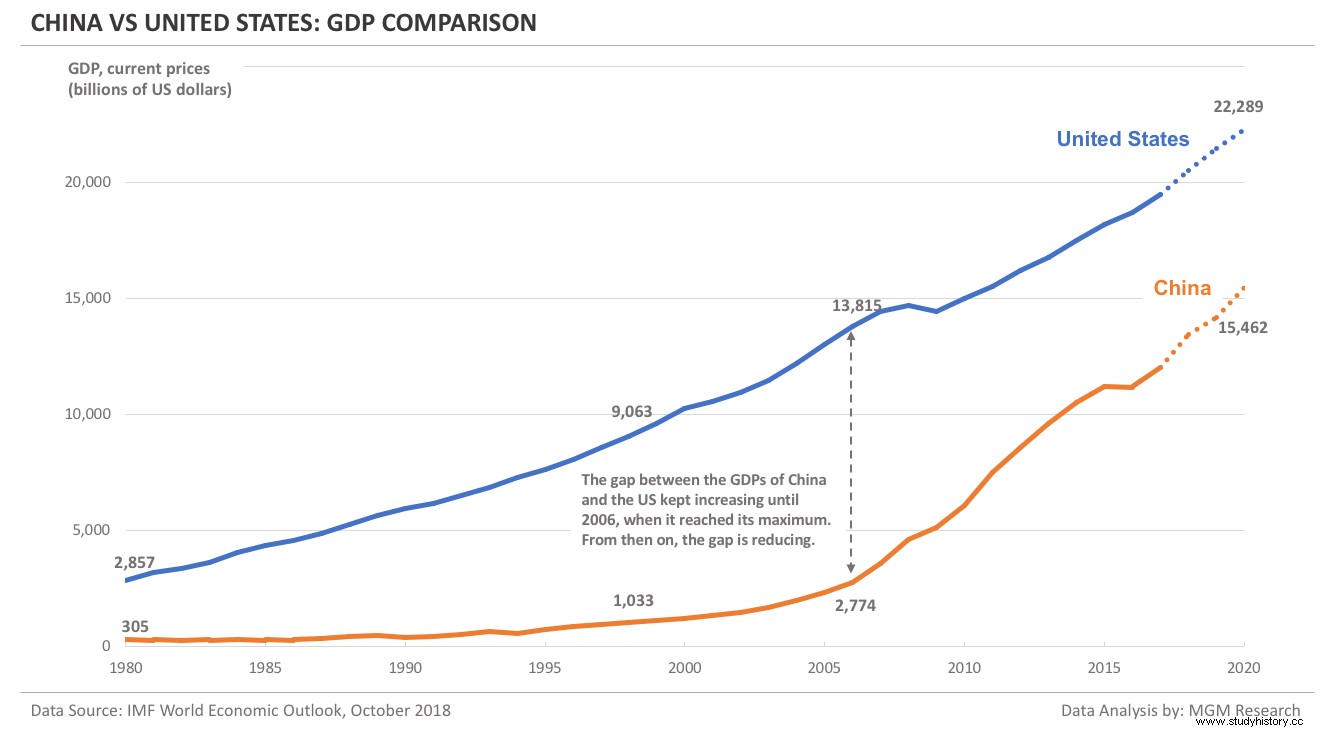
As Eckhard Tolle once said, "The past has no power over the present moment." In fact, China has been seen as one of the world's fastest growing economies for the past thirty years. Thus, China is also a significant player in international trade. Take the effect of Covid-19 as an example. China's city closure in March 2020 triggered a halt to global production, from toys to car parts. Furthermore, its growing GDP and its importance in global trade show that China is ubiquitous.
How did China manage to move up from one of the poorest countries to the top in about forty years? What are the secret ingredients for their success? Well, one cannot talk about China's economic growth without mentioning Mao ZeDong and Deng XiaoPing.
The Great Leap Forward (1958–1962) which has resulted in tens of millions of deaths
On October 1, 1949, Chinese Communist leader Mao Zedong declared the establishment of the People's Republic of China (PRC). On the other hand, people under Mao's mismanagement and distant campaigns suffered from 1949 to 1977. For example, China's Great Leap Forward campaign sought to transform the country from an agrarian to an industrialized economy. Nevertheless, the plan failed and resulted in the economic collapse of tens of millions of people due to famine. Mao's time stopped after his death. Deng XiaoPing emerged as China's new leader after Mao Zedong's death. This marked the turning point for China on a new course and changed the contours of global geopolitics.
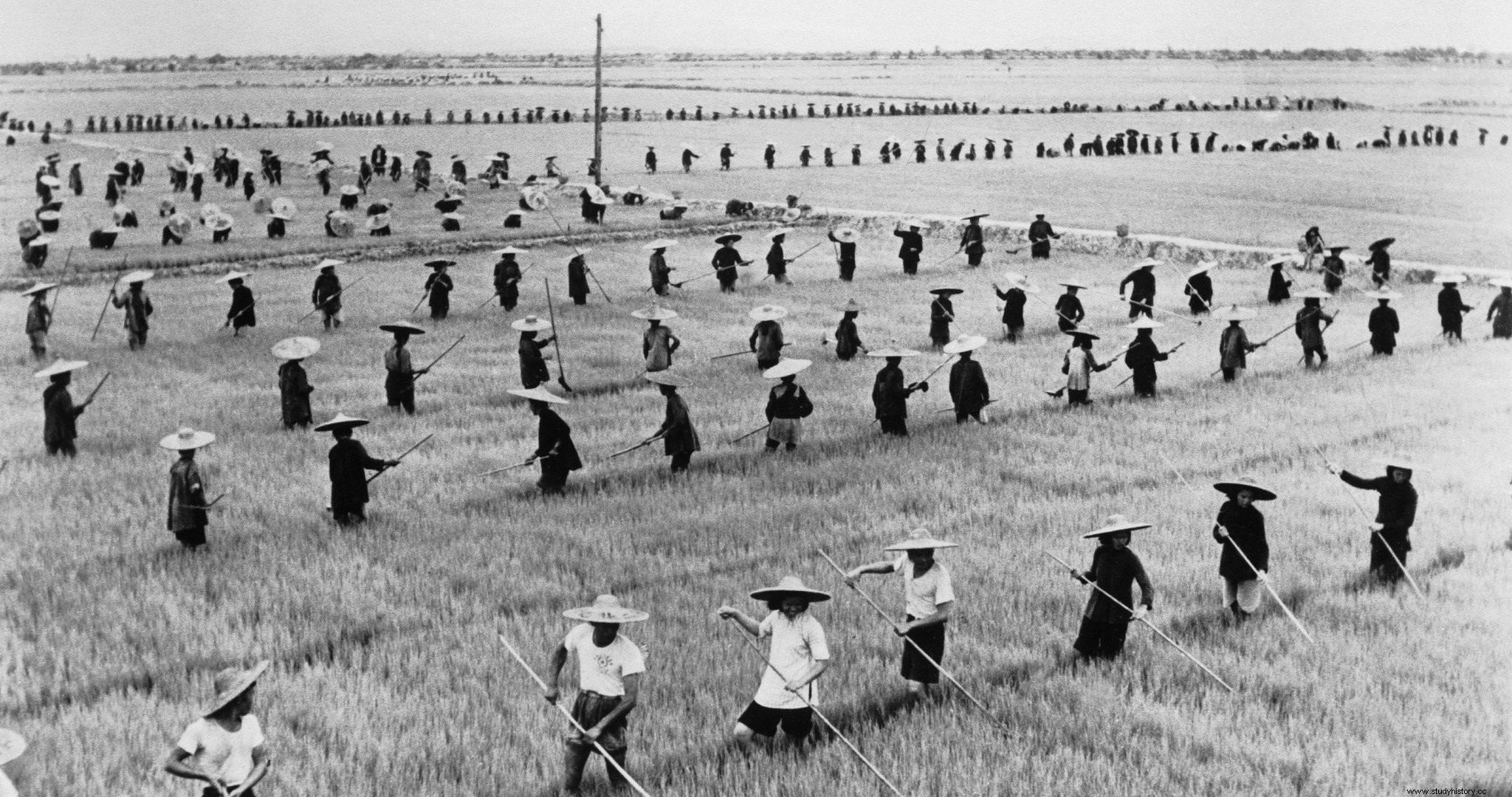
1978:The turning points that changed China
On December 13, 1978, Deng delivered an eloquent speech that dared to speak out against the orthodox Maoist approach to the country ever since its inception. "It is time," Deng said, for members of the Chinese Communist Party to "free their minds, use their heads, seek the truth of the facts, and look to the future together." He criticized that many party members adhered to "book knowledge" and were used to "hanging their flag in the wind." Instead, conservatism and the worship of theories must be overcome in order to make China a "modern and powerful socialist state."
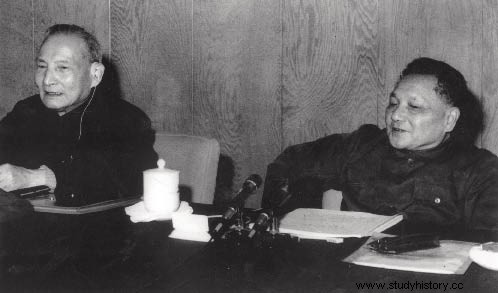
Under Deng's leadership and the "reform and opening up" heading, also known as the "opening up of China," China abandoned previous ideological constraints, broke away from Soviet economic policy, and embraced policies based on practice and experience. It established the basis for a smooth transition from a planned to a market economy focused on the global market. As a result, China has had a remarkable period of economic growth since then. As World Bank President Jim Kim noted in November, "China has increased its per capita income 25 times, and more than 800 million Chinese have lifted themselves out of poverty as a result - more than 70 percent of the total poverty reduction in the world." Not only has the policy had an impact on the domestic scale, but it has also marked the beginning of a shift in international order.
Productivity is China's weapon
Previous research has suggested that China's capital development plays a major role in economic development. In other words, the new infrastructure and the new technology have increased China's production. Although capital development grew by almost 7 per cent a year during 1979-94 according to the IMF, capital production has hardly changed. In other words, regardless of a large expenditure of capital, the units of capital producing remain the same. This mentioned lack of capital elaboration indicates a limited position for capital. Furthermore, the labor force has also felt its weight in economic growth. While capital development accounted for over 65 per cent of the increase before 1978, with labor supply adding another 17 per cent, they accounted for only 58 per cent of the growth after 1978 - a fall of almost 25 per cent. Productivity has made up the rest.
The high productivity was one of the factors that contributed to this economic miracle in China. China's production increased at an annual rate of 3.9 per cent during 1979-94, compared with 1.1 per cent during 1953-78. At the beginning of the 1990s, the share of productivity in production growth had exceeded 50%. At the same time, the share contributed by capital formation fell below 33%. Productivity growth is remarkable - During 1960-1989, US productivity growth averaged 0.4%. The reform was crucial to implementing such a productivity boom.
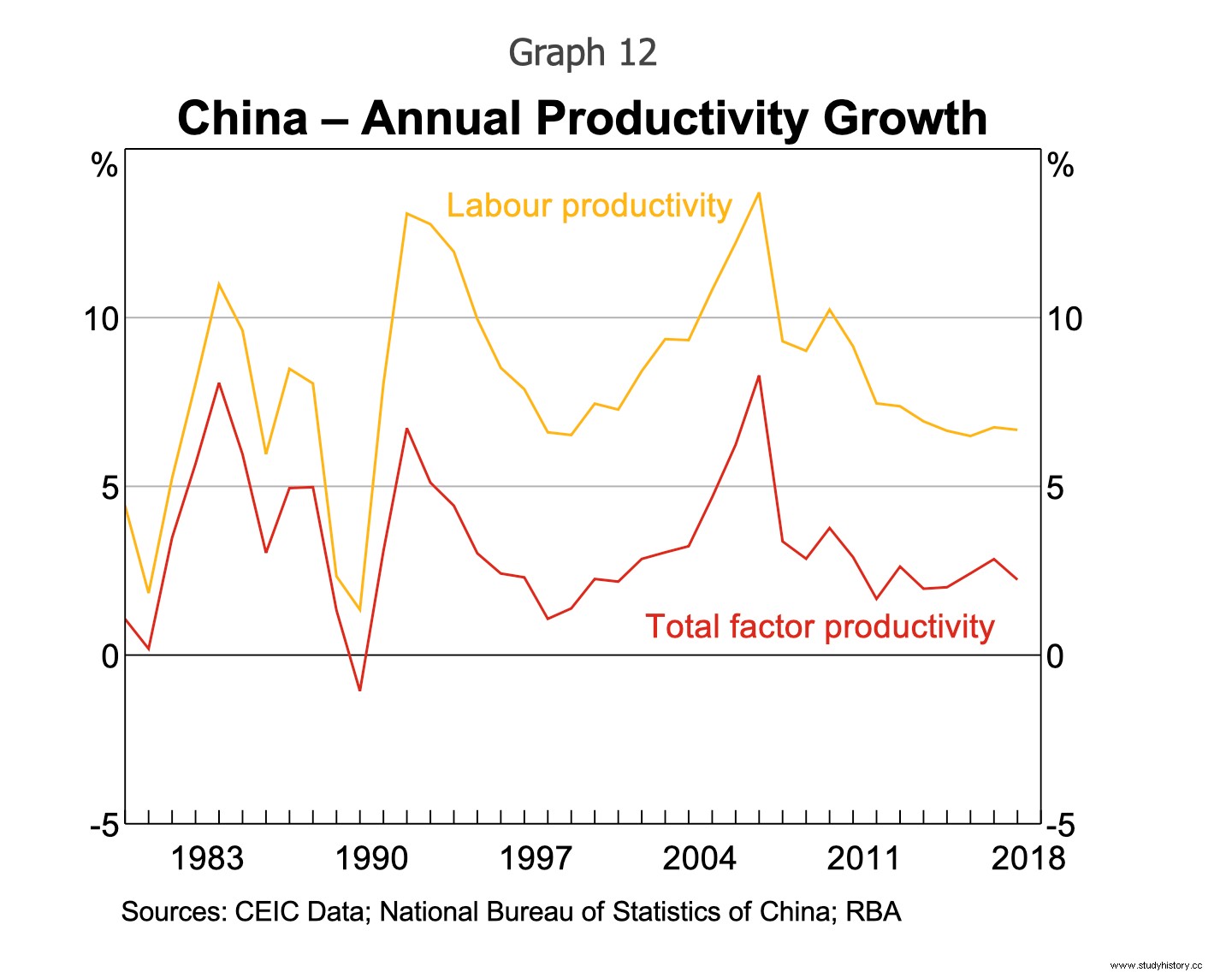 sustained increase in per capita income during this period. Due to the investment-intensive nature of Chinese growth, total factor productivity growth has typically lagged behind labor productivity growth. " class =”wp-image-32847 ″ width =” 599 ″ height =”472 ″ />
sustained increase in per capita income during this period. Due to the investment-intensive nature of Chinese growth, total factor productivity growth has typically lagged behind labor productivity growth. " class =”wp-image-32847 ″ width =” 599 ″ height =”472 ″ /> How did China's economic reform help increase productivity?
How did China's economic reforms increase its productivity? Surprisingly, the rural economy had a significant impact. Before the 1978 reforms, almost four-fifths of the Chinese population was engaged in agriculture; in 1994 had only half. The reform expanded rural property rights and triggered a race to form small non-farm businesses in rural areas. The family businesses became more efficient after the settlement reform, and there was a large profit surplus. As a result, farmers began to establish township businesses around non-agricultural production, such as consumer goods. Meanwhile, state-owned enterprises, which must produce products in accordance with the authorities' place, produce only non-consumer goods. As such, township businesses provided consumers with goods that the states needed. Originally, the government owned all the township businesses, but as the community grew, many self-employed and private businesses emerged. The growth of these businesses filled a void in the market and broke the state-owned economy's original monopoly.
Furthermore, the reform gave business leaders more freedom to control their companies. They have more freedom in their businesses, such as setting the price and keeping part of the profits for future investments. The reform also gave private ownership greater production. As a result of all these unique changes, companies created jobs and developed products or services. In addition, the resulting rapid growth of rural businesses has attracted tens of millions of people from traditional agriculture to production with higher value added. These were unique changes that China had never experienced before.
To sum up, decollectivization (the process of breaking collective control and requiring individuals to work on land allotted to them) and growing demand for consumer goods have paved the way for China's transformation towards an industrialized-based economy.
China's open door policy has also helped economic growth
Another indispensable factor that explains China's growth miracle is constant opening, which is equally guided by the principle of gradualism. China has gradually opened up to the world by introducing various special economic zones (SEZs). Special economic zones are intended to function as zones of rapid economic growth by using tax and business incentives to attract foreign investment and technology. The first special economic zone was established in 1980, in southeastern China and consisted of small towns such as Shenzhen, Zhuhai and Shantou in Guangdong Province and Xiamen in Fujian Province.
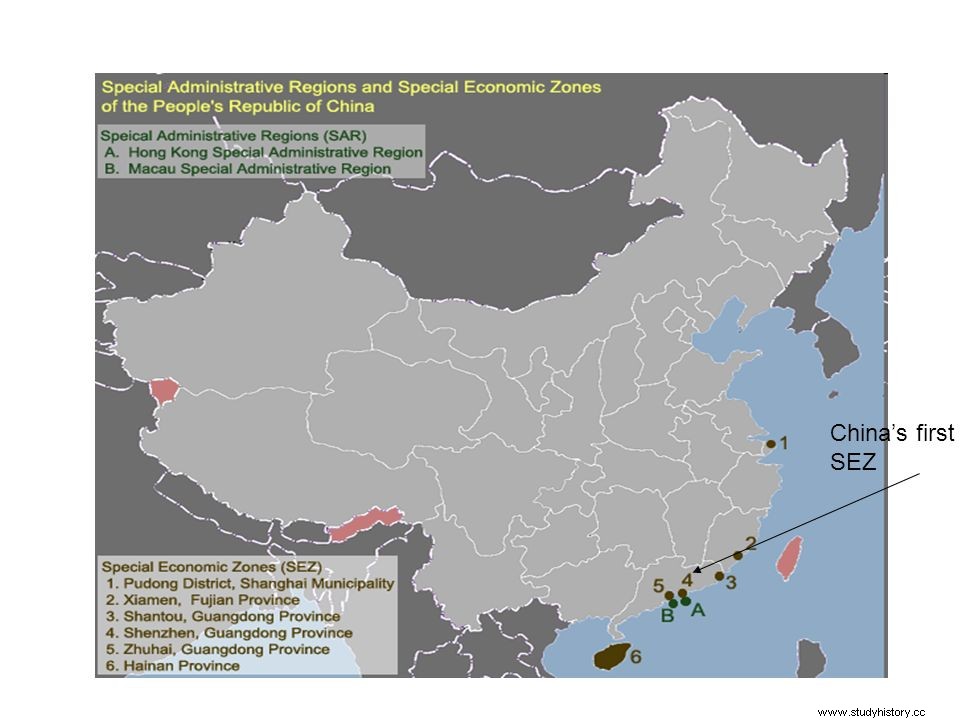
Beijing's central government gave foreign investors a lot of flexibility. For example, without government approval, foreign investors can build their own infrastructure in these areas. As a result, companies have control over managing their investments, production and making market decisions - something that was unique before. The incentives quickly attracted foreign direct investment, resulting in more consumer goods industries and a larger population. SEZ was clearly a success, as Shenzhen's population grew from 30,000 in 1979 in XNUMX to over one million at the turn of the century.
Encouraged by the success of SEZ, China opened 14 more cities along the coast for foreign trade and investment in 1984. The Chinese government also created new regions, such as the China-Singapore Cooperation Park, and upgraded existing special economic zones to take advantage of new opportunities. Since 1992, China has continued to introduce more of its cities by adopting the same policies as foreign direct investment.
Special Economic Zones (SEZs) have contributed significantly to China's development. They have opened up for market-oriented reforms and have acted as catalysts for the efficient allocation of national and international resources. They have also deepened the opening of the economy by attracting international capital, technology, stimulating the industrial development of the country and China's further integration into the global economy. Ever since 1978, the country has witnessed the exponential growth of FDI from $ 0 billion to $ 135 billion in 2017 - an annual growth rate of 16%. China's cumulative use of FDI has topped $ 2 trillion over the past 40 years, accounting for 10% of urban jobs, 20% of tax revenues and almost half of China's international trade.
China's attempt at industrialization
The opening success in 1978 triggered successful industrialization in China. However, this is not the first ambitious industrialization in China's history. It was at least the fourth in terms of historical scene. The first was initiated by the Foreign Affairs Movement after the defeat of the Second Opium War in 1860. Deeply humiliated by various treaties introduced by Western industrial powers, the Qing Monarchy, which controlled China, launched a series of ambitious programs to modernize its backward agricultural economy. including the establishment of a modern marine and industrial system. However, this powerful attempt proved to be a gigantic failure. The government was deeply in debt, and the expected industrial base was not in sight. However, the next three attempts did not lead to China.
The reason for China's failure in these three attempts was neither the lack of a free market nor private property rights. First, the Qing Dynasty probably had a better market system and property rights than Europe. Nor was it the lack of democracy. In fact, the government of the Republic of China was so inclusive that they even invited their "enemy," China's Communist Party. If so, what made the fourth attempt so special that it pushed China out of poverty and successfully launched its own industrial revolution?
What made China's industrialization a success?
The answer is that in the fourth attempt, under the leadership of DengXiaoPing in 1978, the country did not take the advice of Western economists (as it had done in previous attempts, such as imitating the Soviet Union's central planning model or American political institutions).
Instead, it took a very humble, gradual, experimental approach with its economic reforms. In addition to adopting its own "Chinese" approach, another key is that instead of a comprehensive and rapid rollout of market-oriented reforms such as those in Latin America, Eastern European countries, etc. China started with rural reforms. What is unique is that China did not start with enterprise reforms or the opening and liberalization of the financial sector. China took a "bottom-up" approach by letting farmers and poor people get rich first. China also encouraged the development of manufacturing industries to exchange daily manufactured goods for foreign currency and machinery. In addition, it has long established various industrial policies to encourage production exports.
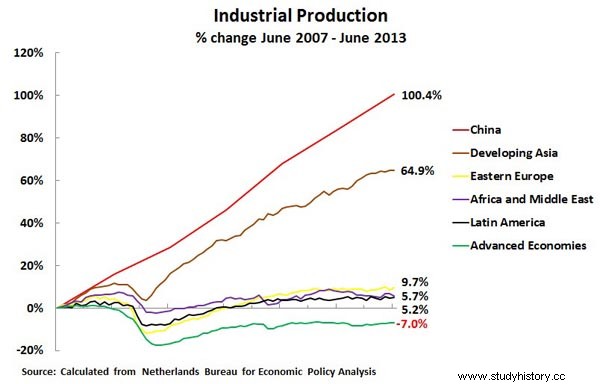 Africa and the Middle East had an increase of 6%, and Eastern Europe had an increase of 10%. However, China's industrial production increased by 100 percent during this time period; total industrial production in development Asia increased by 65 per cent, but china accounted for the majority of this increase. In addition, the increase in industrial production shows China's high productivity. " class =”wp-image-32848 ″ width =” 666 ″ height =”426 ″ />
Africa and the Middle East had an increase of 6%, and Eastern Europe had an increase of 10%. However, China's industrial production increased by 100 percent during this time period; total industrial production in development Asia increased by 65 per cent, but china accounted for the majority of this increase. In addition, the increase in industrial production shows China's high productivity. " class =”wp-image-32848 ″ width =” 666 ″ height =”426 ″ /> the conclusion
China's economic success is not accidental:it has gone through trials and tribulations, as shown in the previous failed industrial revolution. It was through changing the methodology that Deng XiaoPing was able to reform, based on agriculture, a sector that was long mismanaged by Mao ZeDong. Under Deng's leadership, productivity grew rapidly due to profit incentives. As a result, this led to rural farmers moving out of agriculture and into the manufacturing industry. In fact, China is the world's largest production power plant:it produces almost 50 percent of the world's major industrial goods. Furthermore, the opening of China has also encouraged international trade and development through the gradual introduction of special economic zones to stimulate foreign direct investment. The current China is considered a growing global superpower in the fields of economics, military, technology, diplomacy and soft power influence. It is a country that has grown up under and will continue to grow in the future, and positions itself only one place under the superpower, the United States.
